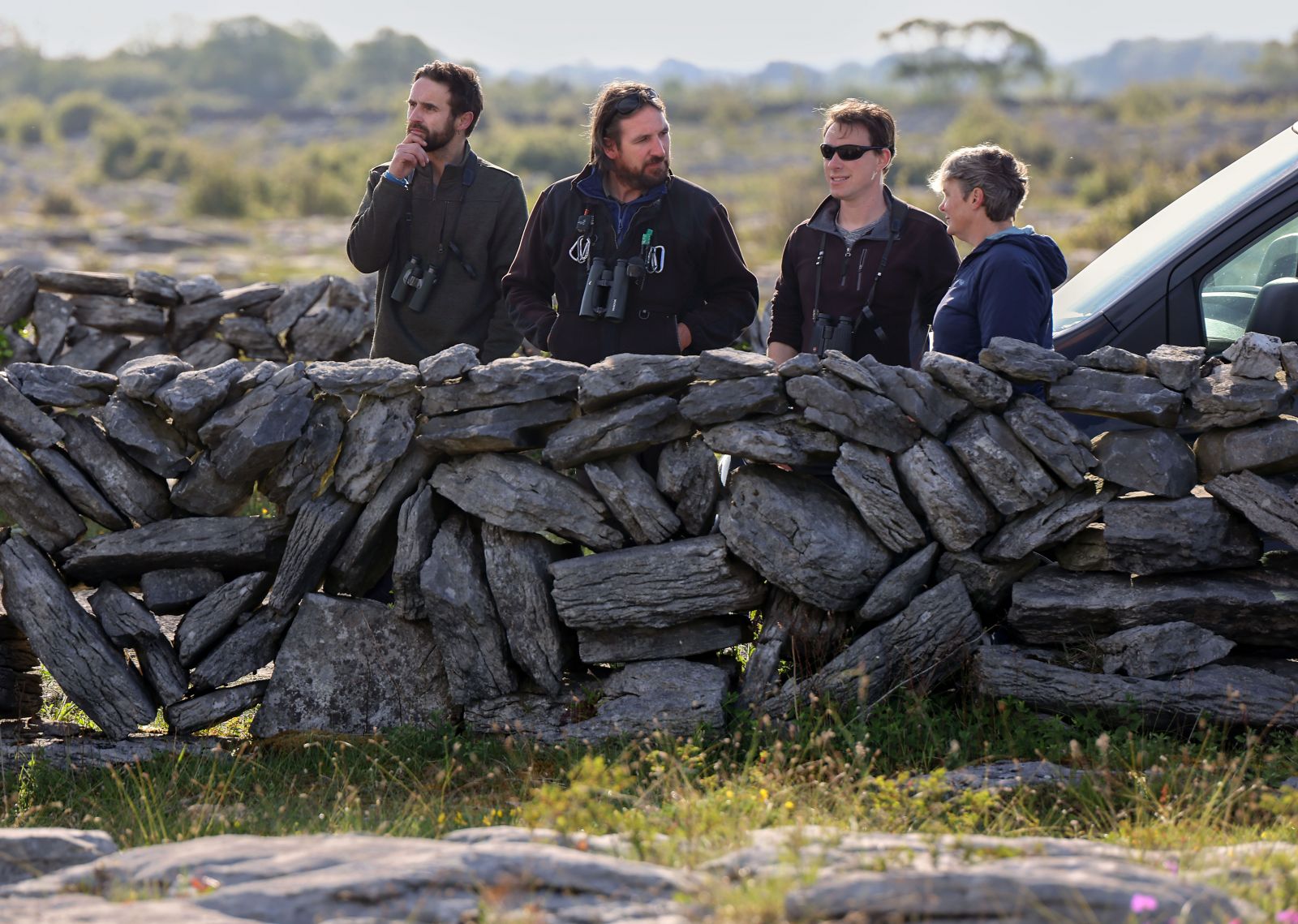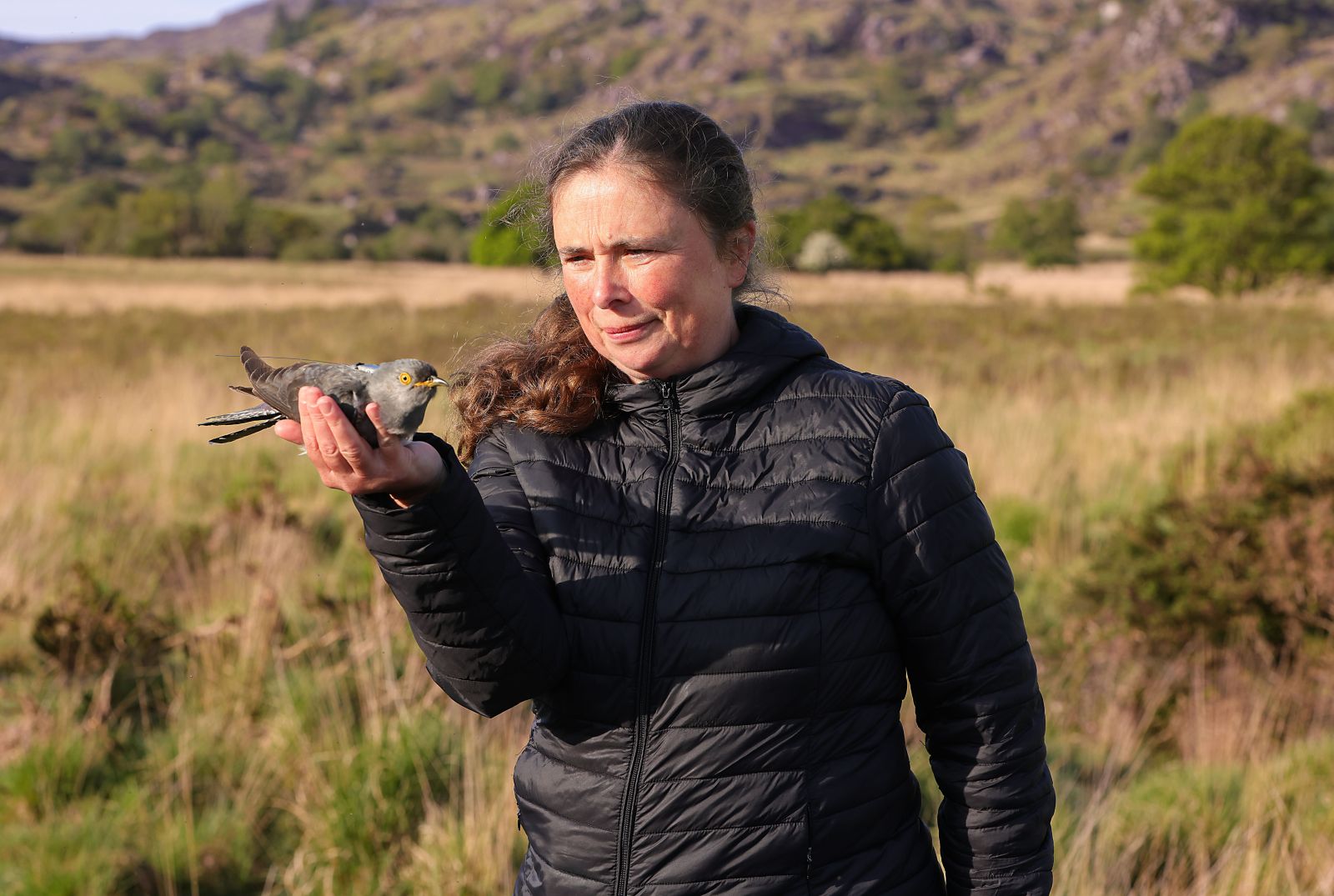News
Irish Cuckoo Tracking Project hopes to solve migration mysteries
Date Released: Thursday, June 8, 2023
One of Ireland’s most intriguing natural mysteries may soon be solved thanks to a cross-channel Cuckoo tracking project that aims to find out where Irish cuckoos spend their winter months. The National Parks and Wildlife Service (NPWS) hopes that the project will also answer the question of whether Irish cuckoos undertake a different migration strategy to their British counterparts across the Irish Sea.
The Cuckoo Tracking Project is being undertaken by the NPWS and the British Trust for Ornithology (BTO).
Minister of State for Heritage Malcolm Noonan says he is looking forward to tracking the birds’ movements and ushering in a new era for bird monitoring in Ireland:
“Cuckoos are fascinating creatures and the Irish population’s migration patterns are something of a mystery, so it will be very exciting to see the results of this innovative project over time. We’ve already seen one of the birds fly from Killarney National Park to Tipperary over the Bank Holiday weekend and another has shot across to the east Cork coast before double-backing to Limerick. It will be fantastic to get a full picture of the movements of these birds at home, during their migration and when they hopefully return to our shores,” he said.
The Cuckoo, along with the Swallow and the Corncrake, has a long history in Ireland as a harbinger of summer. It typically arrives in the last days of April, which have often been referred to as ‘the time of the cuckoo.’
Cuckoos, or Cuach as gaelige, are a summer migrant to Ireland. Adult birds are resident here from April to early July, having spent the winter on the African continent. They are a unique bird in Ireland as they lay their eggs in other birds’ nests and have no involvement in raising their young.
Across Ireland, the Cuckoo has seen a 27% reduction in breeding distribution between the first national census, Bird Atlas (1968-1972), and the most recent Bird Atlas (2007-2011). In the UK the decline is 40%. Population trends show large declines across England and Wales, with increases in Scotland and relative stability in Ireland. In Ireland, the Cuckoo has displayed a population shift northwards and westwards, similar to a number of other migrants that winter in Africa’s humid regions. However, there is little known about the potential causes and drivers of these declines.
While the Cuckoo has been well-studied during the breeding season, very little is known about the routes they take once they head off on migration or where in Africa they spend the winter months. If these areas of importance could be identified, then scientists would be able to better understand habitat pressures that affect losses of the Cuckoo population.
In 2011, British Trust for Ornithology (BTO) embarked on a new project to study Cuckoo migration patterns. As of the end of 2022, over 100 adult Cuckoos have been tagged across Britain and a lot has been learned about the routes taken, and some of the pressures they face whilst on migration. But the big question for birdwatchers in Ireland is do Irish Cuckoos face the same issues or do they undertake a different migration strategy, and therefore experience different challenges?
In May 2023, the National Parks and Wildlife Service (NPWS) at the Department of Housing, Local Government and Heritage linked up with the BTO Cuckoo team to satellite track four Irish Cuckoos: Three from Killarney National Park, Co. Kerry and one from Burren National Park, Co. Clare. The birds were given names and fitted with satellite tags and their movements can be followed on the links below and also at a new Cuckoo page on the Killarney National Park website.
Minister Noonan added:
“I’d like to congratulate the staff of the NPWS, in particular Sam Bayley, Mary Sheehan, Jamie Durrant, Emma Granville, Michael Killeen, Dan Flanagan and others, for their leadership and dedication to this project. It’s great to see our national nature agency collaborating with the BTO on such important, multi-jurisdictional research.”
Dr Chris Hewson, BTO research ecologist and lead scientist on the project, said:
“It’s fantastic to see more cuckoos heading off with satellite tags newly fitted. These birds will help us to better understand the pressures they face, the reasons for the population declines they are undergoing and how we can help them to successfully complete their arduous migrations in the rapidly changing world we share. It’s especially exciting to see birds from Ireland tagged for the first time - we’re looking forward to learning for the first time about the migrations of these cuckoos from the western extremity of the species’ breeding range.”


